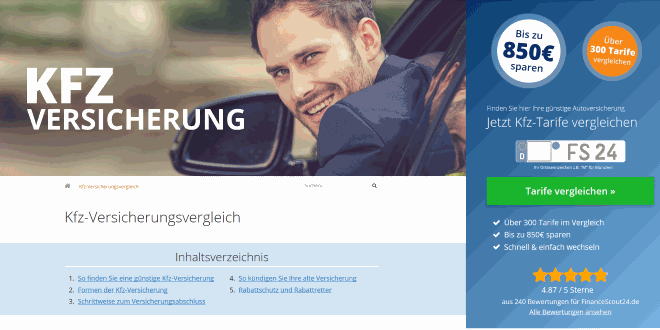Auto insurance costs have been rising nationwide. This article explains what causes those increases and what practical steps can help keep payments under control.
Across Canada, millions of drivers renew their auto insurance every year without realizing how much extra they pay. Rates often increase quietly, leaving many people locked into high monthly costs. By understanding how insurance pricing works and exploring new options, drivers can make informed choices that fit their needs and budget better. This article explains what influences rising insurance rates and how you can take steps to lower your payments this year.

How Policy Renewals and Hidden Rate Adjustments Lead to Higher Monthly Bills for Drivers
When your policy comes up for renewal, you might notice your premium has increased even if you haven’t filed a claim or changed your coverage. Insurers regularly adjust rates based on broader market conditions, not just individual driving records. Factors like regional accident statistics, the rising cost of vehicle parts, and even weather patterns in your area can influence what you pay. Some adjustments happen quietly, embedded in renewal documents that many drivers skim rather than read carefully. Loyalty doesn’t always translate to savings, and insurers often reserve their most competitive rates for new customers. This practice, sometimes called price optimization, means long-term policyholders may gradually see their rates climb without realizing they’re paying more than necessary. Reviewing your renewal notice line by line and comparing it to previous years can reveal these incremental increases.
Practical Steps to Review Your Insurance Terms and Find Cost-Effective Coverage Without Sacrificing Protection
Taking control of your insurance expenses starts with understanding what you’re actually paying for. Request a detailed breakdown of your premium from your insurer, including coverage limits, deductibles, and any optional add-ons. Many drivers carry coverage they no longer need, such as rental car reimbursement if they have access to another vehicle, or higher limits than their assets require. Adjusting your deductible can also have an immediate impact on your monthly bill. Increasing it from 500 to 1,000 Canadian dollars might reduce your premium by 10 to 15 percent, though you’ll need to ensure you have that amount set aside in case of a claim. Bundling policies, maintaining a clean driving record, and asking about discounts for safety features or low mileage are additional strategies that can lower costs without compromising essential protection. Shopping around every year or two is one of the most effective ways to ensure you’re getting competitive rates, as different insurers weigh risk factors differently.
Why 2025 Brings New Opportunities for Drivers to Update Their Insurance Strategy and Keep Expenses Under Control
The insurance landscape continues to evolve, and 2025 presents several opportunities for drivers to reassess their coverage. Advances in telematics and usage-based insurance programs allow some insurers to offer personalized rates based on actual driving behavior rather than broad demographic categories. If you drive infrequently or maintain safe habits, these programs can yield substantial savings. Additionally, increased competition among insurers and the expansion of digital-first providers have made it easier than ever to compare quotes and switch policies with minimal hassle. Regulatory changes in some provinces have also introduced greater transparency around rate-setting practices, giving consumers more insight into how premiums are calculated. Staying informed about these developments and proactively seeking out options tailored to your specific situation can help you take advantage of favorable market conditions.
Understanding the True Drivers Behind Premium Increases
Several interconnected factors contribute to the upward trend in insurance costs. Vehicle repair expenses have surged due to the complexity of modern cars, which are equipped with advanced safety systems, sensors, and computer components that are expensive to fix or replace. Supply chain disruptions have further inflated the cost of parts, extending repair times and increasing the expense of providing rental vehicles to policyholders. Medical costs associated with accident-related injuries have also climbed, and insurers factor these expenses into their pricing models. Natural disasters and extreme weather events, which have become more frequent and severe, lead to higher claim volumes and larger payouts. Insurers spread these costs across their customer base, resulting in premium increases even for drivers in regions less affected by such events. Understanding these underlying causes can help you approach rate increases with a clearer perspective and focus your efforts on areas where you have control.
Real-World Cost Insights and Provider Comparisons
To give you a clearer picture of what drivers across Canada are paying, here’s a comparison of estimated monthly premiums from several major providers. These figures are based on a standard profile: a 35-year-old driver with a clean record, driving a mid-sized sedan, and carrying standard liability and collision coverage in an urban area. Actual rates will vary based on individual circumstances, location, and the specific coverage options selected. All amounts are presented in Canadian dollars to reflect the local currency used throughout Canada.
| Provider | Coverage Type | Estimated Monthly Cost (CAD) |
|---|---|---|
| TD Insurance | Standard Liability + Collision | 150 - 180 |
| Intact Insurance | Standard Liability + Collision | 145 - 175 |
| Desjardins | Standard Liability + Collision | 140 - 170 |
| Aviva Canada | Standard Liability + Collision | 155 - 185 |
| Sonnet Insurance | Standard Liability + Collision | 135 - 165 |
Prices, rates, or cost estimates mentioned in this article are based on the latest available information but may change over time. Independent research is advised before making financial decisions.
These estimates illustrate the range of pricing available and underscore the importance of obtaining personalized quotes. Even small differences in monthly premiums can add up to significant savings over the course of a year when calculated in Canadian dollars.
Taking Action to Secure Better Rates
Once you understand the factors driving your costs and have a sense of what’s available in the market, the next step is to take concrete action. Start by gathering quotes from at least three to five insurers, ensuring you’re comparing equivalent coverage levels. Use online comparison tools to streamline the process, but also consider reaching out to brokers who can access multiple providers on your behalf. Be honest and thorough when providing information, as inaccuracies can lead to denied claims or unexpected premium adjustments later. If you find a better rate, contact your current insurer to see if they’ll match or beat it. Many companies have retention departments authorized to offer discounts to keep existing customers. Document all communications and keep records of quotes and policy details for future reference. Regularly revisiting your coverage every 12 to 18 months ensures you’re not leaving money on the table and that your protection keeps pace with changes in your life and vehicle.
Managing rising insurance costs requires a combination of awareness, research, and proactive decision-making. By understanding how premiums are calculated in Canadian dollars, reviewing your policy carefully, and taking advantage of competitive market conditions, you can keep your expenses under control without sacrificing the coverage you need. The effort invested in comparing options and asking the right questions pays off in both immediate savings and long-term financial stability.



